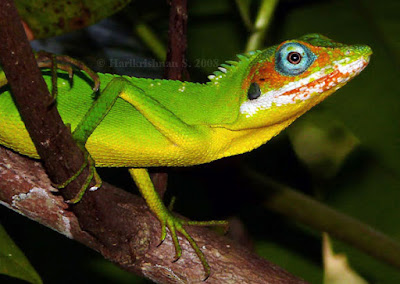Sitting in a bus from Pondicherry
to Chennai, we were not sure where to go next. One of us had to book a
ship ticket, but it was already past 5 in the evening. The thought of
spending the night in Chennai and spending most of the next morning in
Andaman & Nicobar Shipping Services was a distinctly unpleasant
thought. Screw the ship, we’ll get a flight ticket later. So we went to a
coffee shop and while having coffee, decided to go to Palni hills.
Yeah, that’s right, we decided to cut across the flat hot plains of
Tamil Nadu to the other side to reach for the misty mountains of Western
Ghats. We had a good dinner, and then went to the bus stand to find an
overnight bus. Not so easy! Apparently, we didn’t get anything straight
to Kodaikkanal. However,
we were determined to free ourselves from the clutches of Chennai, so
we got into a bus for Coimbatore. A nice bumpy night ride with little
sleep, and we reached the familiar Kovai bus stand. Another bus from
there in the morning to Palni through Pollachi, and then, yet another
bus. Will this journey never end?

Long,
dusty, hot road... the bus struggled to keep its pace, parts of it were
crying loudly as if they were scared of being separated from the rusty
body. We kept a close eye on our bags, piled up in the front of the bus.
We had been travelling for the whole night and half of the day. Late in
the afternoon, the bus started ascending the serpentine road that goes
up Palni Hills. We were eager to see the forest that we expected to
cover the flanks of the road and the animals that run across the road.
What a disappointment it was! Palni Hills were rather denuded,
deforested, and full of plantations, little hamlets and towns. We
started to doubt whether we did the right thing by coming to
Kodaikkanal. May be we should have gone somewhere else! (Happy that we
didn’t do that, for Palni Hills had a lot more to offer than what met
the eyes initially). By the time we reached Kodaikanal,
the famous hill station, we had mostly lost hope of finding natural
forests. However, we still had something to look forward to; meeting
somebody who were championing the cause of nature in this beautiful
mountaintop. Someone who left a first world life to set up a home in
Kodaikanal and to care for the forests of Palni Hills, and done so for
more than 25 years.

Getting out of our hotel room, we enquired around for Vattakkanal Conservation Trust. Though
we got directions from our friendly hotel receptionist, it was too late
in the evening to go there. Therefore, we decided to look at what
attracts so many tourists to this place. Have to say, the little town of
Kodaikkanal has its charm. We particularly enjoyed the little shop
called Pot Luck, where we had coffee sitting at an open-air table near the main market. Another hot-spot was Pastry Corner, small shop with disproportionately tasty pastries and so many customers. If you go to Kodai, you must try out that place.

The
next morning, after a quick visit to Dophin’s nose, a popular spot
where people come to climb a rock near a cliff and get their photographs
taken in a Dicaprio-Winslet-Titanic pose, we went to visit the nursery
for rainforest plants run by VCT. While one of us is an idiot when it
comes to plants other than coconut palms, the other was very curious and
was asking many questions about the nursery to the person in charge
there (whose name we unfortunately do not remember). We had already
spoken to Tanya over the phone and had expressed our desire to meet
them. We had a quick lunch, visited a waterfall because our cab driver
insisted that we had to see that one, and then went to Vattakkanal. We
were greeted as soon as we crossed the gate by two handsome yet totally
mad dogs (Later, we came to find out that the dogs were not really mad,
but very nice. Apparently, they are extremely dedicated to their duty!).
Bob came out to save us from the barking dogs (again, forgetting the
names of the dogs). Initial introductions done, Bob gave us a quick tour
of the nursery they had developed near their home. He is passionate
about raising plants, and our tour was accompanied by a crash course on
how to raise a seedling. This done, our heads spinning out of control
with information overload, Tanya suggested that we go for a small ride!
No need to ask us twice. We quickly informed our cab driver that we were
no longer interested in going to “Berry Jam”. The ride lasted a few
hours, during which we were lucky enough to see some of the last
remaining patches of forests in the Palni Hills, including an amazing Rhododendron
forest! There we sat, listening to them talking about their attempts to
save and restore these beautiful hills. We wondered whether we could
ever be so dedicated to a cause.

Tanya drove us back to the town later in the evening. We said good-bye and told that we wanted to come back. May
be in future, we can also do something to save the amazing ‘shola’
forests. But then again, the chocolate cakes from Pastry Corner alone
are enough of a reason to go back and live there forever.
For more information on VCT and their work, visit http://www.vattakanalconservationtrust.org/









